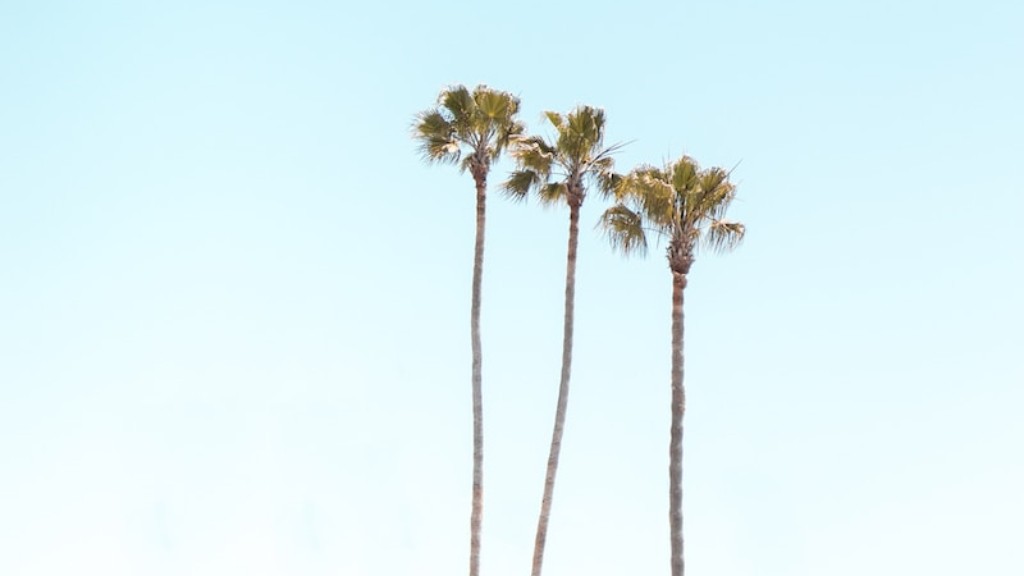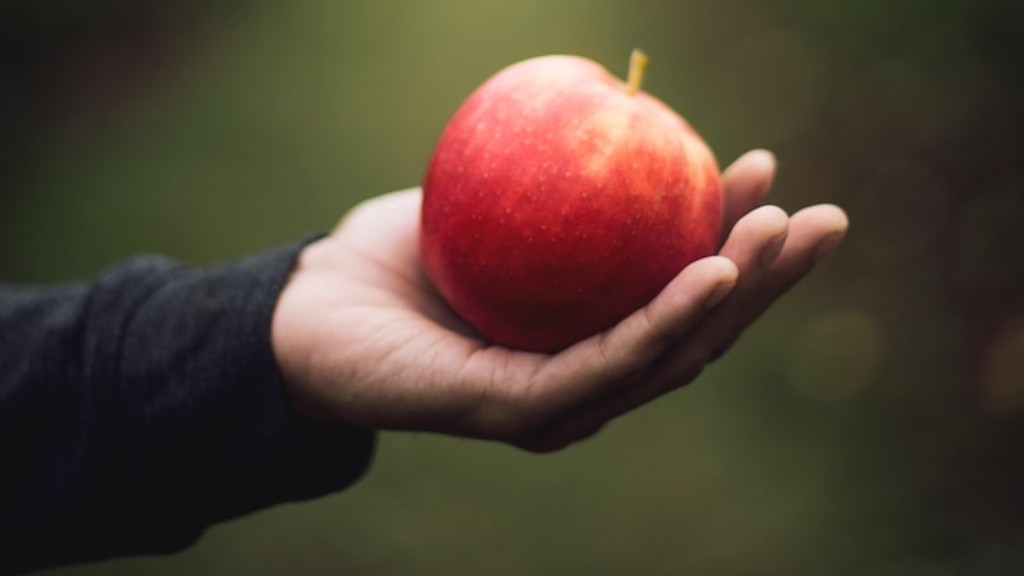In Florida, there is no shortage of palm trees. More than any other state in the US, the Sunshine State is filled with iconic palm trees that cast a tropical vibe over the coast. These majestic plants provide a natural beauty and bring a unique style to any landscape or garden. But which palm is the most common in Florida?
The answer is the Sabal palm. Native to Florida, this tree can reach heights of up to 60 feet and has a majestic-looking canopy that spreads out as it grows older. The Sabal palm is used in a variety of landscaping projects across the state, from large parks and public spaces to small residential gardens. This hardy species has become the go-to palm of choice for many Florida homeowners and landscape architects, providing a timeless look that never goes out of style.
This hardy species stands up to both the cold and the heat, making it an ideal choice for the changing climates of Florida. It’s tolerant of salt air, so it’s great for coastal areas, and it’s also resistant to drought and wind. This is a versatile palm that can thrive in a variety of soils, so it’s great for residential projects, both inland and in coastal areas.
The Sabal can also be pruned and shaped to create a unique look. It’s the perfect addition to any landscaping project, with its tall, bushy canopy providing shade and privacy.It’s important to note, though, that this species can be slow-growing and may take years to reach its full height. Nevertheless, it’s a popular choice for its dark green fronds that provide an eye-catching accent to any landscape design.
Making the choice to use a Sabal palm for landscaping should take a few factors into consideration. First, it’s important to select plants that have been grown organically and are free of disease. Second, the tree should be planted in an area with plenty of room and light, and it should be protected from wind and other harsh elements. Lastly, it’s important to prune and groom the palm, depending on where it’s planted and the desired effect.
Environmental Benefits
Beyond its aesthetic value, the Sabal palm is also an excellent choice for its environmental benefits. This species requires far less water than most other palm trees, making it a great choice for drought-prone areas. It can also provide natural habitat for birds, as its fronds create a shield against predators and its hardy trunk provides a nesting space. What’s more, the palm’s roots can help increase soil stability, making it a great choice for erosion control.
The Sabal palm is also a great choice for public parks and gardens. Its huge canopy provides protection against strong sun and its trunk acts as a windbreak, making it a welcome addition to many urban green spaces. The palm also adds visual appeal and creates a pleasant, shaded environment where people can relax and enjoy nature.
Economic Benefits
The Sabal palm also offers many economic benefits. The tree can provide a long-term investment for a property owner, adding value to their property over the long term. Its long-term maintenance costs are minimal, as the palm requires minimal pruning and can survive in tough climates. The tree can also be used to cut down on energy costs, providing natural shading that can reduce air conditioning costs in the hot Florida summers.
The Sabal palm is also an excellent choice for commercial properties. Its large canopy can provide an eye-catching element to an office building or shopping center, while its hardy roots can help stabilize soil, reducing the need for extensive landscaping. For businesses, the palm can add a touch of tropical beauty to the landscape, while also providing a low-maintenance solution.
Planting and Care
When it comes to planting and caring for a Sabal palm, the key is to choose a species that is suited to the conditions of the area. For sandy soils, the Sabal palmetto is the best choice, while for heavy clay soils, the Sabal minor is the species of choice. Regardless of the species, it’s important to make sure that the tree is planted in an area that receives at least four hours of direct sunlight and is well-drained.
In addition to proper planting, the palm should be well-maintained to ensure its health and longevity. This includes providing adequate fertilizer, watering deeply and regularly, and avoiding pruning too heavily or too often. Regular cleaning of the fronds is also important, as this helps to prevent pests from taking hold. With proper care, a Sabal palm can thrive in most Florida landscapes.
Preserving a Legacy
The Sabal palm is a great choice for Florida homeowners and commercial property owners looking to add a touch of tropical beauty to their landscape. Not only is it a low-maintenance choice that is great for reducing energy costs, it also carries a certain timelessness that is unmatched by other species. Taking time to properly select and care for the palm can help preserve its legacy and bring a touch of beauty to a Florida landscape.
Research and Development
Research into the Sabal palm is ongoing. Currently, work is being done to improve the species’ resistance to storms and pests, as well as to explore ways to better utilize its unique traits for landscaping and urban green spaces. Scientists are also looking into ways to expand its use in commercial spaces, such as the development of dwarf varieties that are better suited for small spaces. Through ongoing research, the potential of the Sabal palm can only increase in the future.
Using Alternatives
Though the Sabal palm is the most common species in Florida, there are other alternative species available. The Chinese fan palm, for example, is a hardy species that can reach heights of 30 feet and is a great choice for creating a privacy hedge. Meanwhile, the date palm is an ideal choice for a more tropical look, with its fruit-bearing fronds and striking silhouette. Ultimately, there is an array of choices when it comes to selecting a palm tree for the Florida landscape.
Public Education
Education is key when it comes to understanding and preserving the Sabal palm. Typically, this includes teaching people how to safely prune and trim the tree, as well as how to properly care for it. There are also educational programs that focus on the palm’s unique environment benefits and its potential for use in landscapes and green spaces. These programs can help to ensure that the Sabal palm is protected and enhance public awareness of the species.
Conclusion
The Sabal palm is the most common palm species in Florida and it’s easy to see why. Its hardiness, environmental benefits, and aesthetic appeal make it a great choice for both residential and commercial projects. With the right selection, planting, and care, the Sabal palm can be a timeless and low-maintenance addition to any Florida landscape.




